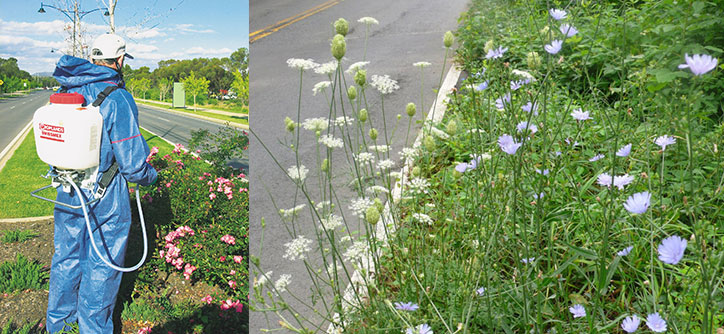When planning a weed control strategy , setting goals is the first step. But what is considered a good result in holistic terms?
An ideal result would be achieving 100 % efficacy in the control of target weeds, preventing seed set and adopting an appropriate resistant management strategy.At the same time is important to aim at zero to minimal damage of non-target organisms and the wider environment including air, water and soil, and zero harm to spray operators.
How do we achieve these goals?
The first step is proper weed identification, using Weedeck series, Weeds Australia Online tool Herbariums, GRDC Weed app or Ute Guide, backed up with common knowledge.
Secondly Integrated Weed Management (IWM) techniques should be considered whenever possible, including the following checklist:
1.Managerial /Hygiene
Come Clean Go Clean, weed free mulches/composts, capturing weed seeds when hand pulling to prevent further additions to the weed seed bank.
2.Biological
Crytobageous salviniae weevil on salvinia or Cactoblastis moth on the Prickly Pear are two successful bio controls in a very limited pool of options.
3.Genetic
Plant Breeding, careful crop choice providing stronger crop competition
4.Mechanical
Is there enough soil moisture in profile to cultivate weeds instead of a fallow spray or a spray and cultivate sequence in the double knock style?
5.Chemical Hazard and Risk
Lessen the risk to user/bystanders and the environment through considering the hierarchy of controls:
- Substitution: can I switch from a S7 Poison like paraquat to an S5 poison, or use a dry versus wet formulation?
- Engineering: can I use a coarser spray, change my nozzle type or use a drift retardant?
- Administration: always read the label/SDS for human safety and Eco toxicity
- Use a Safe Work Method Statement (SWMS) for Chemical mixing of concentrate, ie. never lift concentrate above your chest
- Operator training: ChemCert training and pre start inductions
- Personal Protective Equipmentaccording to label/SDS and situation, are you fit enough to wear a respirator?
6.Chemical Application Efficiency
Consider the timing of application i.e. is the plant stressed, is the weather suitable for good coverage and the plant actively growing? Surfactant choice, weigh up the spread on the leaf surface with a wetting agent against increased drift potential, again follow the label critical comments before adding any wetting agents.
7.Chemical Record Keeping
Generally a mandatory requirement, involving making the records within 24 to 48 hours of application and keeping them for 2 to 3 years post application. Records are also useful for performance measurement, QA programs and residue management.
Conclusion
Whether a supervisor or spray operator, ChemCert training aims to provide you with two AQF level 3 competencies that will help you to further develop your spray applicators skill set, fostering improved spray efficacy, personal and public safety, whilst raising the bar on sustainable chemical use and integrated weed management.




